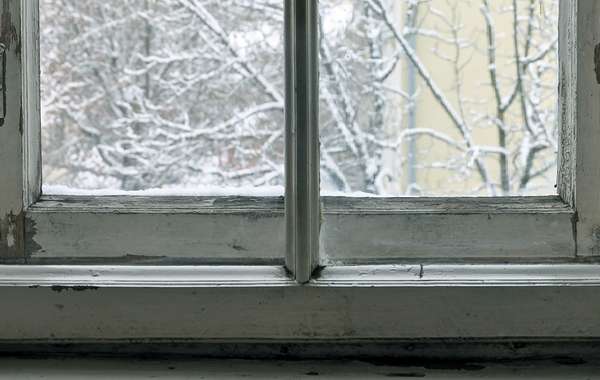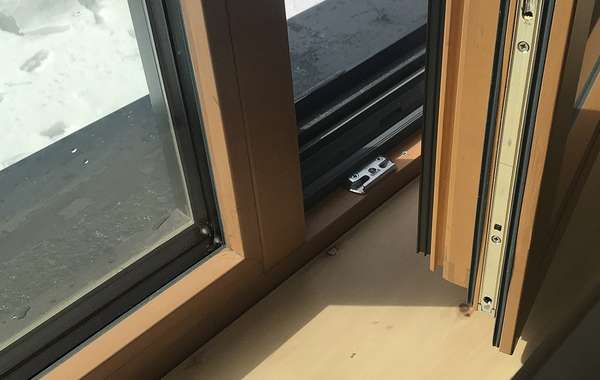So are skylights a good or bad idea?
It has been said that there are two kinds of skylights; those that leak, and those that are going to leak. This is not a true statement, but it is one that is derived from a truth of sorts. No, not every skylight will leak, but a lot of them will and a lot are going to look like they are leaking even when they aren't, as they are notorious for causing condensation issues - so learn how to deal with this here.
The problem is not necessarily a fault or defect during installation or manufacturing, but an issue of physics. Ignoring entirely the aesthetic appeal for a moment, the reality is that skylights will most likely be a big energy drain in any climate (due to added heating or cooling needs) and increasingly become a durability nightmare the further north you go.
Before listing off the problems, let me first say that I love skylights. I love natural light in general, and given the amount of time humans spend indoors I welcome features that make you feel a bit more like you are outdoors; skylights are great for that. If they are operational and within reach, they can also act as an exhaust vent in summer for releasing stale warm air.
The benefits of skylights are real, but that about does it for them. I very much enjoy sitting by a skylight in someone else's home but I don't want one in mine.
The problem with a skylight is that it presents an entirely new series of challenges for a building envelope. New homes have ceiling insulation starting around R40, and finding them as high as R60 and R70 is not that unusual anymore, nor is that much insulation overkill in a really cold climate. In contrast, a skylight will probably be rated somewhere between R3 and R5 if you're lucky. That is a seriously weak link in the chain.
Since a skylight will be installed proud of the roof surface and ceilings are fairly thick in comparison, that usually leads to a deep cavity in the ceiling where there is a skylight. This adds to the dramatic and enjoyable effect, but also provides a perfect place for warm air to collect.
Wherever there is a concentration of warm, humid air in a home there will be an increased rate of heat loss in winter. But the problem doesn't end there - when you get warm and humid air collecting by a cold surface (glass) you have a risk of condensation forming.
So here we get to the point about skylights leaking; just because you see drops of water running down the wall from your skylight doesn't mean it's leaking, that could just be condensation.
Skylight leaks might be condensation:
Since condensation occurs when warm, humid air meets a cold surface, warming that surface reduces the amount of moisture that will condense on it. Don't mistake that for meaning heat up there is a good thing; raising the temperature of the glass should come from having a third pane of glass, well-insulated frames and gas-filled chambers between panes.
Relative Humidity (RH) is also a factor - condensation is worsened by higher levels of humidity in homes. Lowering humidity levels should make a difference. To further reduce those risks, it's best not to install skylights near humid areas like kitchens and bathrooms.
If you already have one installed and it appears to be 'leaking', before you hire someone to jump on the roof and start solving problems that may not exist, put on your lab coat and try some interior forensics first. Is there a lot of condensation on it? Does it only seem to 'leak' in cold months even when there is no snow?

Those are indications that the solution may be found on the interior, not the exterior. Covering it with plastic will help, pointing a fan at it will prevent moisture from condensing, and for the interior conditions in general, lower temperatures and lower humidity would certainly help. Those are some interior solutions; if that doesn't solve your problems then you have business to attend to on the roof.
When skylights really are leaking:
With skylights, even if you solve interior issues of condensation, you still have potential problems outside. The comparatively huge amounts of heat lost through skylights compared to the rest of your roof will melt snow and can lead to ice dams and consequently the dreaded leak. Ice damming & frost in attics can be problematic and should be fixed as it will often cause water to back up and possibly get past shingles and metal flashings.
Skylights and energy efficiency:
Any way you slice it, the deck is stacked against skylights in terms of their energy performance. They will add a little bit of heat on sunny days in winter (with the right orientation and angle), but the heat they lose when the sun is down will far outweigh any heat they gain.
The real heat gain unfortunately comes in summer when you don't want it. The most common roof angles are a lower slope that don't work well with the angle of the winter sun. So skylights end up getting a lot more direct sun in summer than in winter, and for far more hours in a day. That added heat will be a burden on your air conditioning system if you have one, and your sweat glands if you don't.
Choosing the best skylight:
The first thing to realize is that getting the best skylight on the market will not 'save' you energy, it will help mitigate damage. The only way a skylight will save you energy and headaches is if you leave it in the store and don't mess around with the continuity of your roof.

Instead of a skylight, consider a light well
There is an alternative to skylights that you may be interested in exploring - light wells. A light well is a sealed tube that can bring natural light far into homes without being a tremendous energy drain or causing moisture damage. The mirrored interior of the tube can bring natural light down several stories from the roof, so they are actually more versatile than traditional skylights for providing natural light.
If you're still reading this far and you still want a skylight, at least pick one that will give you the least amount of grief. A triple-paned higher R value skylight will mean a bit less heat loss than a poor quality one, but more importantly it will reduce the risk of condensation problems as the surface of the glass will be a bit warmer.
Those are some of the realities surrounding skylights. There is no denying they create a really nice interior ambience, but they come with an energy cost and some physics problems in cold climates. If you are going to install one, knowing those challenges will help you rise to them.
Any window or skylight is a breach in your building envelope, so great care should be taken for long term durability and performance. Below are some valuable tips for window installation.
Also, See here to know which type of window frame to choose between wood, aluminum or PVC / Vinyl
For a full rundown on How to Install windows & doors Correctly in LEED & Passive House, see here from the EcoHome Green Building Guides, north America's favourite sustainable construction tips website































There's a benefit to skylights that open that wasn't acknowledged here. Ever since I've had a skylight in my upstairs bedroom and also in adjacent bathroom, I've never had a summer night that was unbearable. Rarely do I even feel a need to use a fan. It's made a world of difference for comfort in the summertime.
Recently, I have begun to notice signs of moisture below the bathroom one, which fits with the picture included in this article. When I opened the window I discovered beads of moisture around the lip of the opening. I haven't been in the habit of using the exhaust fan but will definitely in the future now. In fact, I need to install a timer so I can run it longer conveniently. I take short showers only a couple times per week.
Excellent thoughts you have shared in this article, thanks.
I've been in the skylight industry for 19 years and the problem is there are to many bad examples where skylights do not meet requirements or are installed badly.